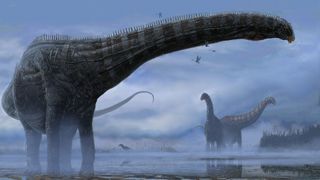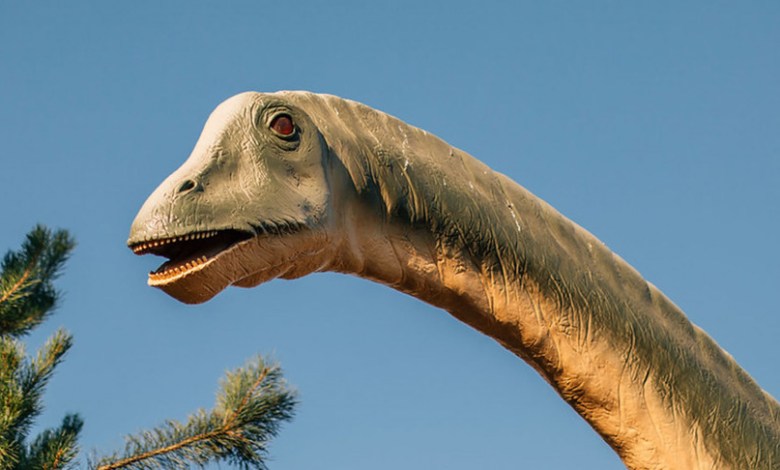Achoo!
Respiratory illness gave young ‘Dolly’ the dinosaur flu-like symptoms-
“The young sauropod’s illness was a real pain in the neck.“
The following written content by Mindy Weisberger
The young sauropod’s illness was a real pain in the neck.

Hacking coughs, uncontrollable sneezing, high fevers and pounding headaches can make anyone miserable — even a dinosaur.
Recently, researchers identified the first evidence of respiratory illness in a long-necked, herbivorous type of dinosaur known as a sauropod, which lived about 150 million years ago during the Jurassic period (201.3 million to 145 million years ago) in what is now Montana.
The fossil, nicknamed “Dolly,” contained misshapen structures in the neck bones. Those vertebrae were once paired with air sacs that connected to the lungs and were part of the sauropod’s respiratory system, and the bones’ abnormal appearance was likely caused by a raging respiratory infection that may have led to the animal’s death when it was 15 to 20 years old, researchers found.

While paleontologists don’t know what type of microorganism sickened the sauropod, the dinosaur likely experienced flu-like symptoms resembling those that affect modern birds (and people) with severe respiratory illness, according to a study published Feb. 10 in the journal Scientific Reports.
Paleontologists found the fossil — a skull and partial neck — near Bozeman, Montana, in 1990. After wrapping it in a protective plaster jacket, they brought it to the nearby Museum of the Rockies. The fossil, now known as MOR 7029, remained unexamined in storage at the museum for more than a decade, said lead study author Cary Woodruff, director of paleontology at the Great Plains Dinosaur Museum in Malta, Montana.
Woodruff began studying Dolly in the mid-2000s as a master’s candidate at the Museum of the Rockies, and he realized that the fossil was from an undescribed species in the Diplodocus family Diplodocidae (Dolly’s unofficial nickname starts with the same letter as “diplodocus,” and is also a nod to country singer/songwriter Dolly Parton, Woodruff told Live Science.)
He went back to the site where Dolly was originally excavated, to see if there were any more bones to be found, and it took until 2018 for Woodruff to collect all of the available material and examine it together. Early in his investigation, “these pathologic structures in the vertebrae just absolutely popped out,” and the bone anomalies were unlike anything that he or any sauropod expert had ever seen, he said. Read more from Live Science.
Subscribe here





